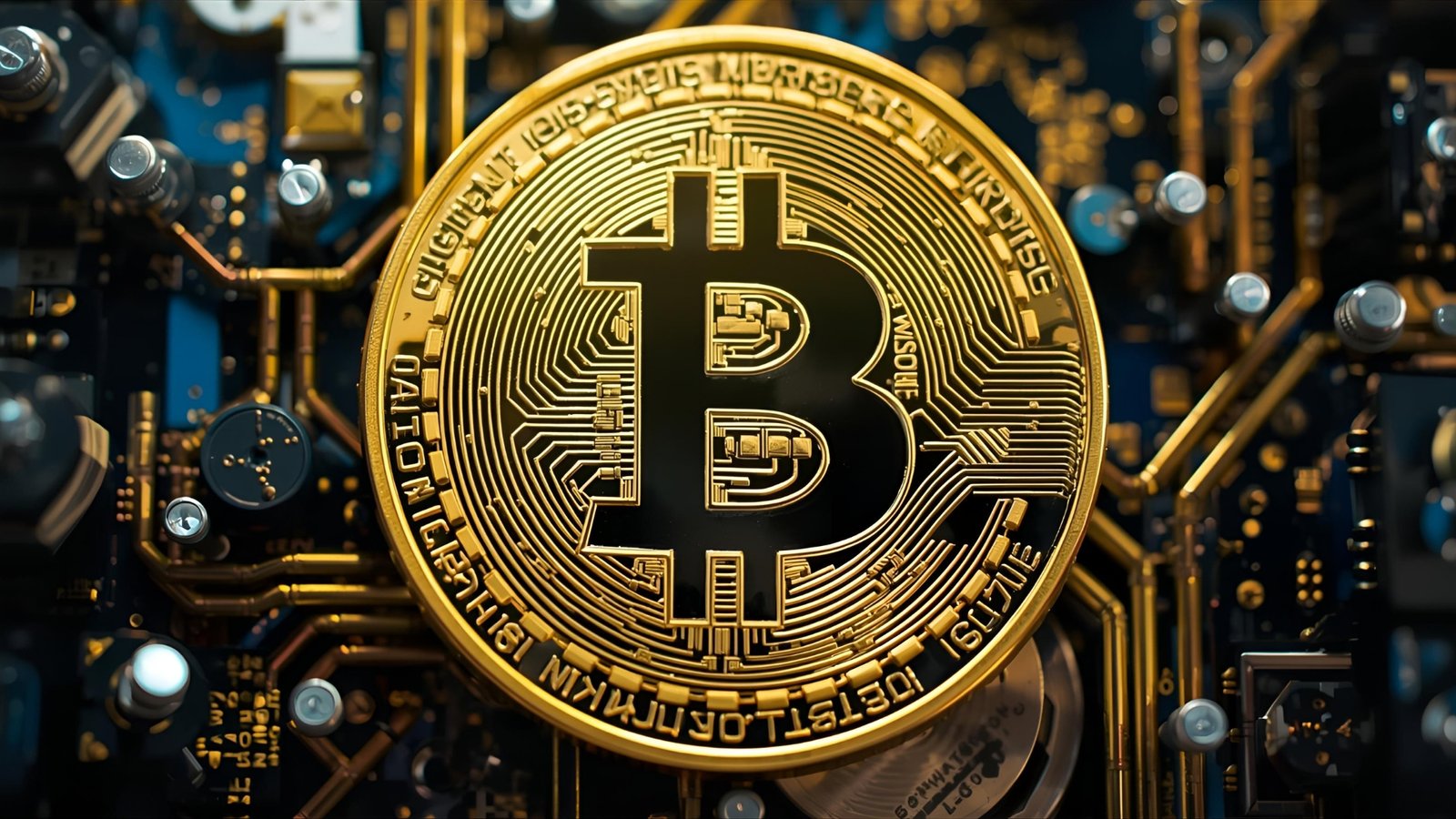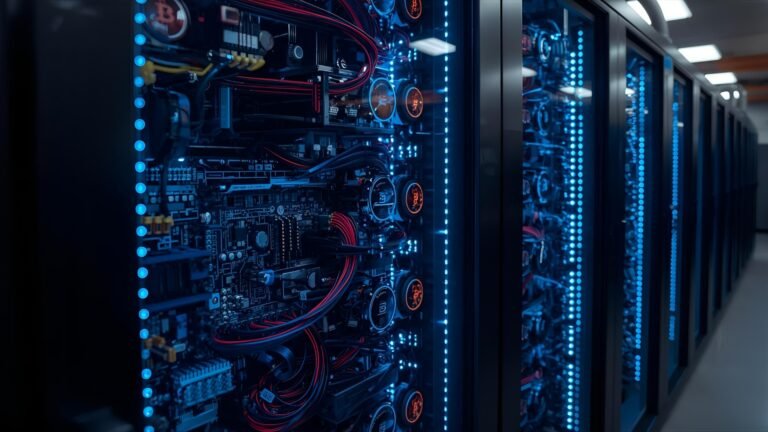If you are exploring the world of Bitcoin mining, one phrase quickly dominates your research: Bitcoin mining Machine price. The machine is the heart of any mining operation, and its cost—both to buy and to run—determines whether your venture turns a profit or becomes an expensive lesson. Prices move in cycles, influenced by Bitcoin’s market value, miner demand, manufacturing lead times, chip efficiency, and even electricity markets. Navigating those factors can feel daunting, especially when new models and buzzwords flood the conversation every month.
This in-depth guide simplifies the decision-making process. We will unpack what drives Bitcoin mining Machine price across different models and generations, how to evaluate value beyond the sticker cost, and what to consider in terms of energy efficiency, hosting, maintenance, and resale. You will also learn how to calculate returns, assess ASIC miners side by side, and create a purchase strategy that works whether you are buying a single unit for a home setup or scaling a professional farm. By the end, you will understand not only what a fair price looks like, but how to pay the right price at the right time.
What Does Price Really Mean in Bitcoin Mining
When miners talk about price, they are often referring to more than the number printed on a store page. The Bitcoin mining Machine price has at least three layers. First is the list or negotiated purchase price for the hardware. Second is the operating cost, dominated by electricity, which converts directly into profitability. Third is the opportunity cost—how the same capital might perform if held as BTC, or deployed into more efficient machines later. These layers work together, so a cheaper machine that guzzles power can end up costing more than a premium unit with better energy efficiency.
The simplest way to visualize this is to consider the output per dollar. If a miner with a top-tier hash rate costs more up front but turns the same electricity into more hashes and thus more expected BTC, the lifetime total can justify the higher purchase price. Conversely, a bargain bin unit with high J/TH (joules per terahash) can become unprofitable the moment network difficulty rises or your power rate increases.
The Core Drivers Behind Bitcoin mining Machine Price

The first driver is the spot price of Bitcoin itself. When BTC rallies, new participants rush to mine, demand for hardware jumps, and the Bitcoin mining Machine price rises—sometimes dramatically. Manufacturers with limited capacity allocate units to buyers who move quickly or commit to bulk orders, while resellers add markups based on scarcity.
The second driver is silicon efficiency. Mining machines are specialized computers called ASICs. Each generation aims to deliver a lower joules-per-terahash figure, meaning more work for the same electricity. When a new efficiency champion hits the market, its price often reflects both performance and scarcity. Meanwhile, older models slide in price, but not always in value, especially if your electricity rate is low enough to keep them profitable.
A third driver is network conditions. Changes in Bitcoin difficulty—which adjusts approximately every two weeks—affect how many coins a given hashrate can earn. If difficulty spikes due to a wave of new machines coming online, the profitability math changes overnight. In these moments, buyer behavior shifts, and Bitcoin mining Machine price can soften or harden depending on whether the market expects difficulty to keep rising.
Finally, logistics and warranties matter. Import duties, shipping costs, customs delays, and warranty coverage all influence the effective price. Machines protected by strong RMA support or regional service centers can command a premium because downtime is expensive in mining.
New vs. Used: How the Market Sets Two Different Prices
Buying new machines from manufacturers or authorized distributors usually provides warranty coverage, predictable lead times, and the latest efficiency. The trade-off is paying the current Bitcoin mining Machine price at or near peak demand, especially when BTC trends upward.
Used machines, by contrast, can look like a bargain. However, many have logged thousands of hours in dusty environments, endured heat cycles, and may have fans, hashboards, or power supplies near end of life. Smart buyers request detailed photos, boot logs, and proof of stable operation. They also verify the firmware, check for third-party modifications, and ask about replacement timelines for consumables like fans and thermal pads. The discounted Bitcoin mining Machine price on used units can make sense if your electricity is cheap and you can afford higher maintenance or you plan to operate in a cool climate that reduces stress on the hardware.
A good rule is to model both scenarios. Compare a new unit with superior J/TH at a higher sticker price against two older units at a lower combined cost but higher electricity draw. Often, the newer machine wins at average power rates, while older gear only beats it when you have exceptional electricity pricing or free cooling.
Understanding Efficiency, Hash Rate, and J/TH
Every ASIC miner has two headline numbers: hash rate (e.g., terahashes per second, TH/s) and energy efficiency (joules per terahash, J/TH). The hash rate is how much work the machine can perform; the efficiency is how much power it needs to perform that work. Together, they determine the machine’s output relative to your electricity bill.
When comparing Bitcoin mining Machine price, normalize cost per terahash and cost per unit of efficiency. A miner that delivers higher TH/s at a reasonable J/TH may be preferable to two cheaper boxes whose combined power draw exceeds your circuit capacity. In commercial settings, power density matters; high-efficiency miners can pack more hashrate into the same electrical footprint, bringing down infrastructure costs per TH.
Another detail is tuning. Some machines support firmware that allows you to underclock for better J/TH or overclock for more TH/s. While tuning can improve payback under certain conditions, it also requires robust cooling and can void warranties if done improperly. Consider the full picture, not just the headline hashrate on a forum screenshot.
Total Cost of Ownership: The Real Price Tag
The Bitcoin mining Machine price you pay on day one is only part of the story. Total cost of ownership, or TCO, includes the machine, PSU, racks, cabling, cooling (air or immersion cooling), networking, labor, shipping, insurance, and downtime. Professional miners model TCO over the expected life of the machine—often two to five years—then discount future cash flows to decide whether to buy now or wait for a generational leap.
Electricity dominates operating costs. A small difference in your power rate—say, USD 0.07/kWh vs. USD 0.09/kWh—can mean the difference between a healthy margin and breakeven. This is why many buyers seek hosting providers in low-cost regions. Hosting contracts typically bundle electricity, space, and maintenance into a monthly fee per kilowatt. Even then, it is wise to analyze host reputation, uptime guarantees, and what happens during curtailment events. The cheapest host on paper is not a bargain if your machines sit idle.
How Network Difficulty and Halvings Shape Prices

Bitcoin adjusts its mining difficulty to keep block times around ten minutes. When more hashrate joins the network, blocks would arrive too quickly, so the protocol makes the puzzle harder; when hashrate leaves, it makes it easier. Rising difficulty lowers each miner’s expected BTC per TH/s, which can compress margins and reduce what buyers are willing to pay for hardware. Conversely, falling difficulty can make the same miner suddenly more attractive, nudging Bitcoin mining Machine price higher.
Then there are the halvings, scheduled events that halve the reward miners receive per block. Halvings pressure margins, but they also tend to coincide with longer bull cycles where BTC price increases over time. In the months around a halving, hardware markets can become unpredictable: some operators sell older fleets at a discount, while others bet on price appreciation and buy the most efficient gear they can find. Understanding that rhythm helps buyers time purchases, secure better deals, and avoid panic buying at cycle peaks.
Price Benchmarks: Cost per TH/s and Cost per J/TH
The easiest way to compare machines is to compute two ratios. The first is price per TH/s. Divide the Bitcoin mining Machine price by the machine’s hashrate. The second is price per J/TH. Divide the price by the efficiency rating; this puts a dollar figure on each unit of energy performance. Neither ratio is perfect, but together they reveal how the market values throughput and efficiency right now.
If two machines have similar price per TH/s but one has significantly better J/TH, the more efficient model is likely the stronger long-term buy. If you have nearly free power and are constrained by capital rather than electricity, you might favor the lowest price per TH/s. Most miners, however, live in between, and should weigh both ratios against their power rate, rack space, and cooling.
ROI Math: Turning Price Into Payback
Profitability ultimately depends on revenue minus costs. Revenue is the BTC your hashrate earns, multiplied by the BTC price, minus pool fees and variance. Costs are mostly electricity and hosting. A practical approach is to model monthly BTC earned per TH/s given current network difficulty, then multiply by your machine’s TH/s. Subtract energy costs: machine wattage times hours per month, divided by 1000 to get kWh, multiplied by your $/kWh or hosting rate. The remainder, expressed in BTC or fiat, is your gross margin.
Once you have that number, estimate how many months of operation it takes to pay back the Bitcoin mining Machine price. Add a buffer for downtime or difficulty growth. If the payback period feels comfortable for your risk tolerance and you believe in BTC over the investment horizon, the purchase can make sense. If the ROI case hinges entirely on BTC mooning immediately, consider scaling back or waiting for a more favorable entry, because difficulty can rise while prices wobble.
New Releases, Preorders, and Supply Chain Considerations
Manufacturers often announce a new generation months before bulk shipments. Preorders sometimes come with discounts, but they lock you into delivery risk and market uncertainty. The Bitcoin mining Machine price for preorders reflects expected performance and scarcity rather than proven field results. Early batches may also carry firmware quirks that need patching. If you cannot afford delays, buying proven models from reputable distributors can be safer, even if unit price is higher.
Supply chain dynamics also affect availability. Wafer allocation at foundries, yield rates on cutting-edge nodes, and logistics bottlenecks can tighten supply. Distributors that hold inventory or offer transparent lead times become valuable partners. When you evaluate a quote, ask about shipping windows, customs documentation, and after-sales support. The best price on paper is not the best deal if delivery slips by months.
Hosting vs. Home Mining: How Location Shifts Your Effective Price
If you operate at home, your effective Bitcoin mining Machine price includes unique costs. Residential electricity is often higher, and thermal management becomes a daily task. Machines are loud, and heat has to go somewhere. The upside is full control: you can power off during expensive hours or tune machines more aggressively, and you capture all upside in BTC without sharing with a host.
In a hosted facility, your price per kilowatt is usually lower, and airflow or immersion systems allow higher density and stability. You may, however, pay minimum terms, security deposits, connection fees, and shipping both ways. Hosts sometimes throttle or curtail during power events, and the contract structure determines who bears that risk. Compare total effective monthly cost and expected uptime rather than focusing solely on the headline Bitcoin mining Machine price. Many successful miners blend both strategies: a core fleet on hosting and a small-scale home setup for flexibility and learning.
Cooling and Power Infrastructure: Hidden Price Multipliers
Cooling has become a decisive factor in mining economics. Air-cooled setups are straightforward but struggle in hot climates, causing throttling or higher failure rates. Immersion cooling submerges machines in dielectric fluid, dramatically improving heat transfer, reducing dust, and enabling higher hashrate per unit. The initial capex is higher, but the efficiency gains, reduced fan wear, and potential for overclocking can improve ROI at scale.
Your power infrastructure—transformers, PDUs, breakers, and wiring—also impacts effective price. Many buyers overlook the fact that a marginally cheaper machine that requires a different voltage standard or extra power supplies can erase savings once you rework electrical layouts. When judging Bitcoin mining Machine price, bake in the infrastructure delta.
Warranty, Repairs, and the Secondary Market
A robust warranty can be worth several percentage points of the purchase price. Verify duration, claim process, and whether you have regional service centers. Some brands rely on third-party repair networks; others handle RMAs centrally. Downtime converts directly into lost coins, so the speed of repair matters more than the promised coverage on paper.
The secondary market for miners is active and seasonal. During bull runs, resellers snap up fleets and list them at premiums. During drawdowns, distressed sales appear. If you plan to resell later, choose models with broad recognition and parts availability. Machines with proprietary quirks or scarce spare parts can trade at steep discounts. Keeping boxes, accessories, and detailed logs of maintenance can raise your resale value, effectively lowering your lifetime Bitcoin mining Machine price.
Security, Firmware, and Operational Discipline
Security might not seem related to price, but it protects your investment. Always change default passwords, segment miners on a dedicated network, and update firmware from official sources. Malware that hijacks hashrate or manipulates pool settings is a hidden tax that inflates your true cost. Operational discipline—consistent monitoring, log reviews, and temperature checks—keeps machines hashing and extends their service life. Every day of stable uptime improves the economics of the price you paid.
Also Read: Bitcoin Is Based on Energy Says Elon Musk
Building a Purchase Strategy for Any Budget

Start by defining constraints: total capital, power rate, space, and your appetite for hands-on maintenance. With those knowns, shortlist three to five models that fit your power and cooling plan. For each model, calculate price per TH/s and estimate operating cost per month at your electricity rate. Run ROI scenarios at conservative, base, and optimistic BTC prices, and assume difficulty drifts upward over time. This produces a range of payback outcomes.
Negotiate quotes from multiple distributors or hosts. Ask for batch availability and shipping windows, and request references from prior customers. If you are new, consider buying one unit first to learn the quirks of setup, noise, and airflow before scaling. Treat that first machine as tuition that helps you avoid costly errors when you commit to a larger Bitcoin mining Machine price later.
Timing the Market Without Chasing It
It is tempting to time hardware purchases perfectly—buy at the bottom of the cycle, sell at the top. In reality, mining is a business of averages. A disciplined buyer sets alerts, watches difficulty trends, and pounces when prices diverge from fundamentals. For instance, when network hashrate dips due to seasonal power conditions, some sellers offload inventory at discounts. Similarly, when a new generation is announced, outgoing models often see a temporary price trough before stabilizing based on their efficiency relative to power costs.
A steady accumulation strategy can beat market timing. Buy in tranches as your models prove themselves, and avoid overextending when forums are euphoric. The goal is not to guess the exact bottom, but to assemble a fleet at an average Bitcoin mining Machine price that makes sense against your operating realities.
Common Pitfalls That Inflate the Real Price
New miners often fixate on sticker price and hash rate while ignoring uptime and energy. A misconfigured airflow path, clogged filters, or inadequate electrical headroom can cut performance, turning a fair price into a bad deal. Another mistake is skipping due diligence on sellers. A low quote with vague shipping terms can morph into unexpected delays, incomplete paperwork for customs, or units that arrive with mismatched PSUs. Always verify serials, batch numbers, and test results before sending final payment.
Over-optimizing for a single metric—like price per TH/s—without considering J/TH, hosting SLA, or resale value is another way buyers overpay. The best deals balance acquisition price, operating cost, and operational reliability.
The Role of Pools and Payout Structures
Although pools do not directly change your Bitcoin mining Machine price, they affect how quickly you realize returns. Different pools charge different fees and offer payout schemes such as PPS, PPS+, or FPPS. Each approach handles variance and transaction fees differently, which can subtly alter your monthly revenue. It is worth testing reputable pools with a small portion of hashrate to see which nets the most stable payouts after fees. Over a year, small differences compound, effectively improving the price you paid by reducing payback time.
Future Outlook: Efficiency Curves and Strategic Patience
Looking ahead, efficiency gains are likely to continue, but not always at the dramatic pace of earlier generations. As silicon approaches physical limits, improvements come from smarter chip design, better packaging, and superior cooling. For buyers, that means the half-life of your investment could lengthen, increasing the importance of selecting machines with solid J/TH and a track record of reliability. Strategic patience—waiting for credible field data on a new model before committing a large Bitcoin mining Machine price—can reduce risk while preserving most of the upside.
Meanwhile, macro factors such as energy markets, demand response programs, and grid incentives will shape where miners can profitably operate. Those dynamics can create windows when hardware is attractively priced relative to its earning potential. Being ready—financially and operationally—to act during those windows is a competitive advantage.
Conclusion
The phrase Bitcoin mining Machine price is shorthand for a complex set of trade-offs. It is the number on an invoice, but also the electricity rate on your bill, the efficiency in J/TH, the uptime you can achieve, and the resale you will command later.
Smart buyers resist impulse purchases and instead run the math: normalize cost per TH/s and per J/TH, model ROI across multiple BTC and difficulty scenarios, and factor in logistics, warranty, and hosting terms. Whether you are launching your first rig or scaling a farm, the best price is the one that fits your power, space, and risk profile—and that keeps hashing profitably long after the hype cycle turns.
FAQs
What is a good Bitcoin mining Machine price for beginners?
There is no universal number, because a good price depends on your electricity cost, target hashrate, and willingness to manage heat and noise. Beginners should look for machines with strong efficiency in J/TH and stable firmware rather than chasing the absolute lowest sticker price. When the payback period looks acceptable across conservative BTC scenarios, the price is likely fair.
Should I buy new or used miners to save money?
Used miners can reduce your entry Bitcoin mining Machine price, but you accept higher maintenance risk and potential downtime. If you have low-cost power and can service hardware, used gear may make sense. If you value warranty and predictable uptime, new machines from reputable distributors are safer, even at a higher cost.
How do electricity rates change the right machine to buy?
Electricity rates transform the economics more than any other factor. With expensive power, prioritize ASIC miners with top-tier energy efficiency even if their purchase price is higher. With very cheap power, older machines with lower upfront cost and middling J/TH can still turn a profit.
Are hosting services worth it compared to home mining?
Hosting can lower your effective operating cost and eliminate noise and heat, but contracts add fees and may include curtailment. Home mining gives total control but often higher power rates and logistical challenges. Compare total monthly cost and expected uptime rather than focusing solely on the Bitcoin mining Machine price.
How do halvings affect hardware prices?
Halvings reduce block rewards, putting pressure on miner margins. Around these events, some operators sell older fleets, creating deals, while others scramble for high-efficiency models, pushing up prices. If you understand your power cost and efficiency needs, you can use halving cycles to your advantage—buying when others sell and avoiding peak prices driven by hype.

